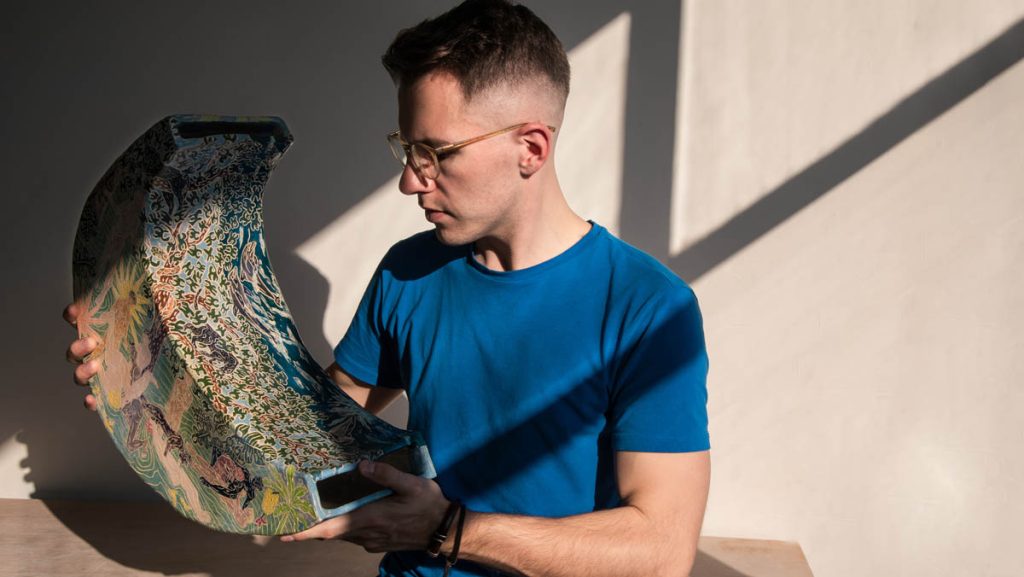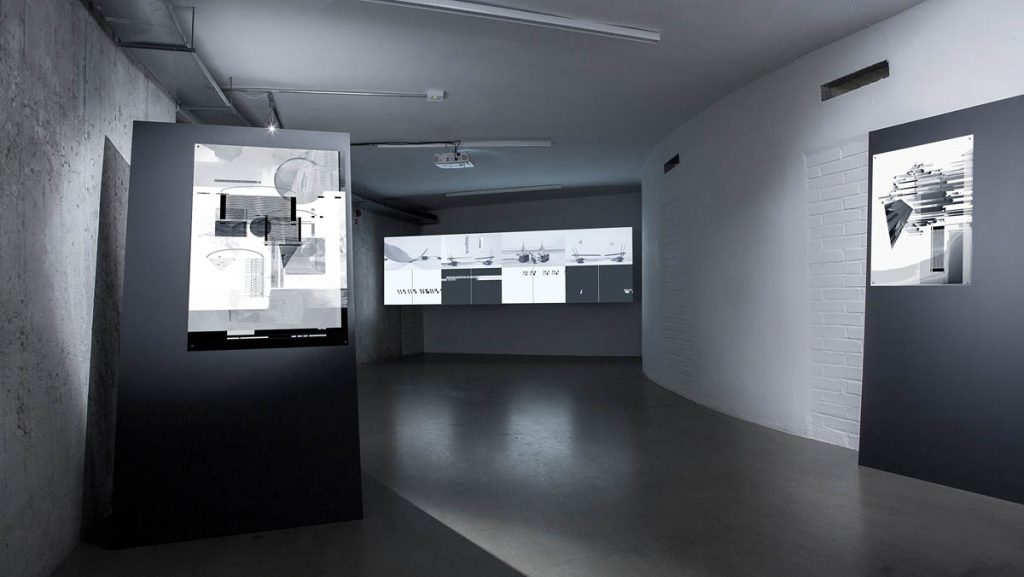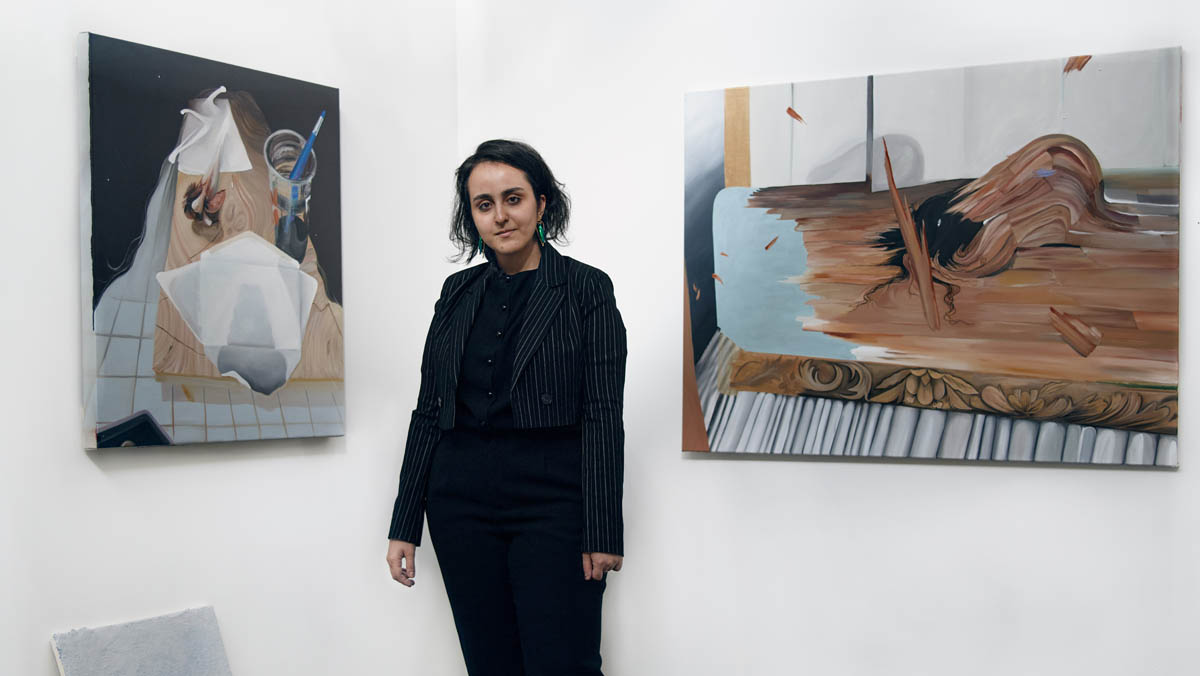
She draws from first-person perspectives, defamiliarizing the mundane to invite a heightened sense of contemplation about our surroundings. Painting is her go-to medium for playing hide and seek with objects and time, but more often than not, the process surprises her. She is graduated 2021 from Yale school of Art in painting and printmaking.
Tell me about your work in general – what themes are you interested in?
In general my recent paintings on canvas are about time and space in relation to my body and my mundane belongings within my limited surroundings. Through these limitations I try to conjure subjects that explore affect, time, and reflection (while trying to examine and criticize the deprivation of contemporary times and the limited nature of consumer goods). I use a roughly human-sized scale because it invites a kind of anthropomorphic subjectivity. These works invite viewers to reorient themselves in relation to their subject position.
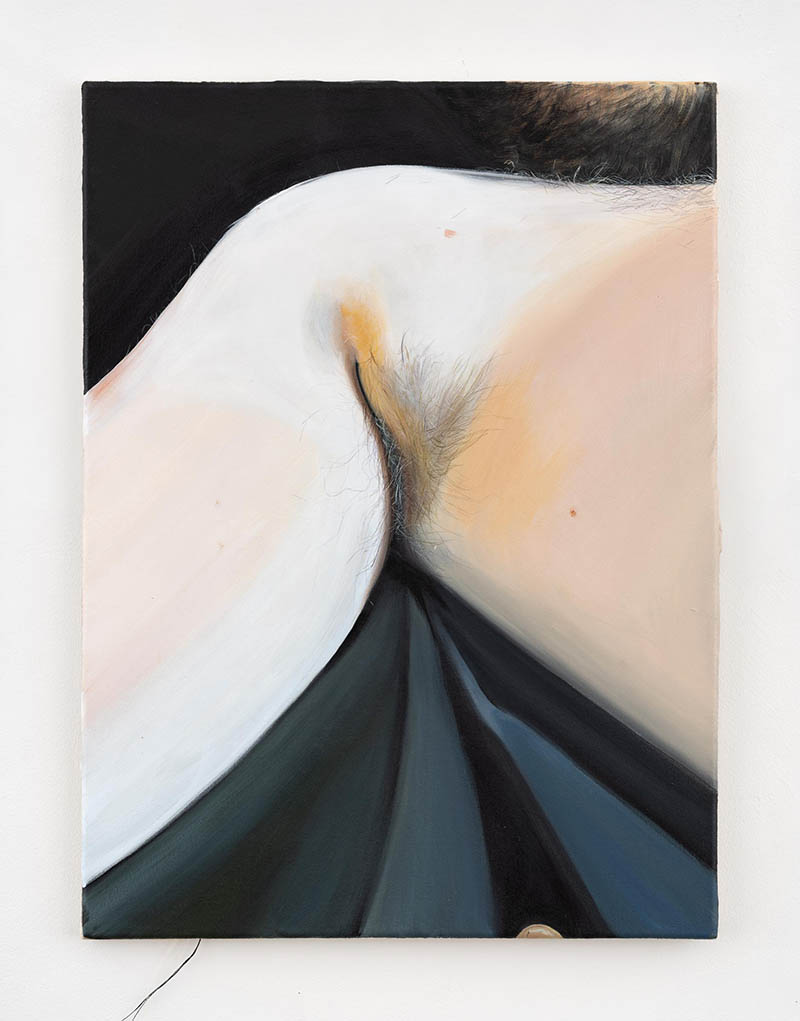
Where do you find inspiration?
Banal events, memories and objects. Random activity in this contemporary isolation and silence.Nothing. But, Before I start the painting, I am inspired by my personal history regarding my experience with diaspora. A major and fraught event in my life was moving from Tehran to New Haven in search of freedom. Since childhood, as a person outside of the United States you are often told that freedom exists elsewhere. But instead of these promised freedoms I ran into many limitations based on several factors when I came to the United States. So, I have turned my gaze towards my fragile and finite surroundings to try and alchemically transform them into something else for myself and others in an effort to find that freedom. I try to extend my own personal narrative and my still life practice into something more universal. During the process of painting, I am always inspired by Farsi proverbs. They are idiosyncratic and sometimes they can beckon one to imagine a creature or an uncanny event. In my mind the ambiguous nature of these proverbs allows me to imagine something new, humorous, queer and creative. The function of proverbs is really interesting to me, for instance a glass is a familiar object, but we never question why we call a glass a glass. The world of Farsi proverbs is a polymorphic one, where anything can happen, and everything can turn into anything.
Sometimes I subconsciously realize that I am trying to portray a sentence or words in the middle or the end of a painting, like a hieroglyph.
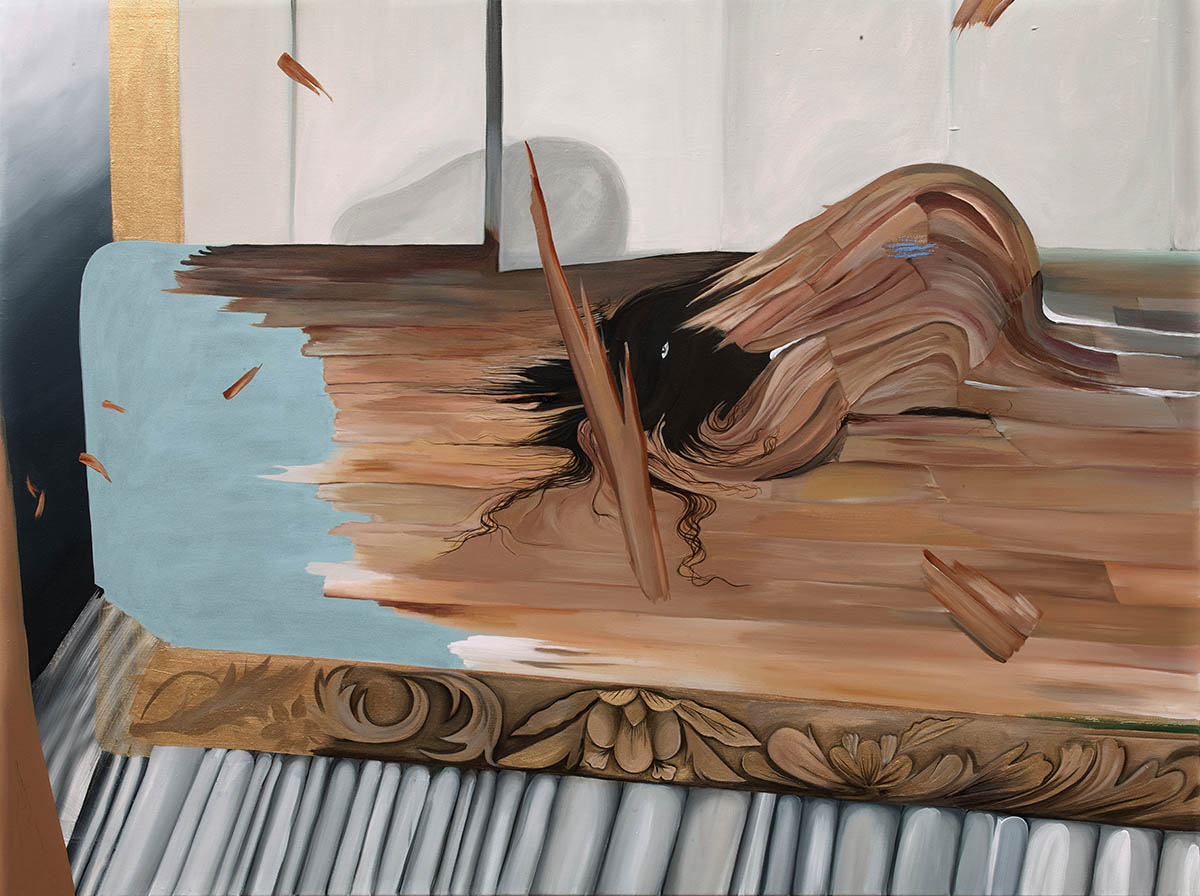
A self portraitAcrylic and my real hair on canvas 30.48.1 inches 2022
How would you describe your work?
Some of my paintings depict my eyelids. The paintings begin explicitly from my perspective. I make paintings of the walls of the house where I live in New Haven. They terminate at the end of my gaze which rests upon my phone and tablet, papers, wooden floors, asphalt and my shadow. My goal in painting is to defamiliarize the viewer with the subject and have them ask themselves how they define it outside of utility. I occasionally use bricolage in my work, to include the subject itself rather than just a depiction (including artificial teeth and my hair and …).
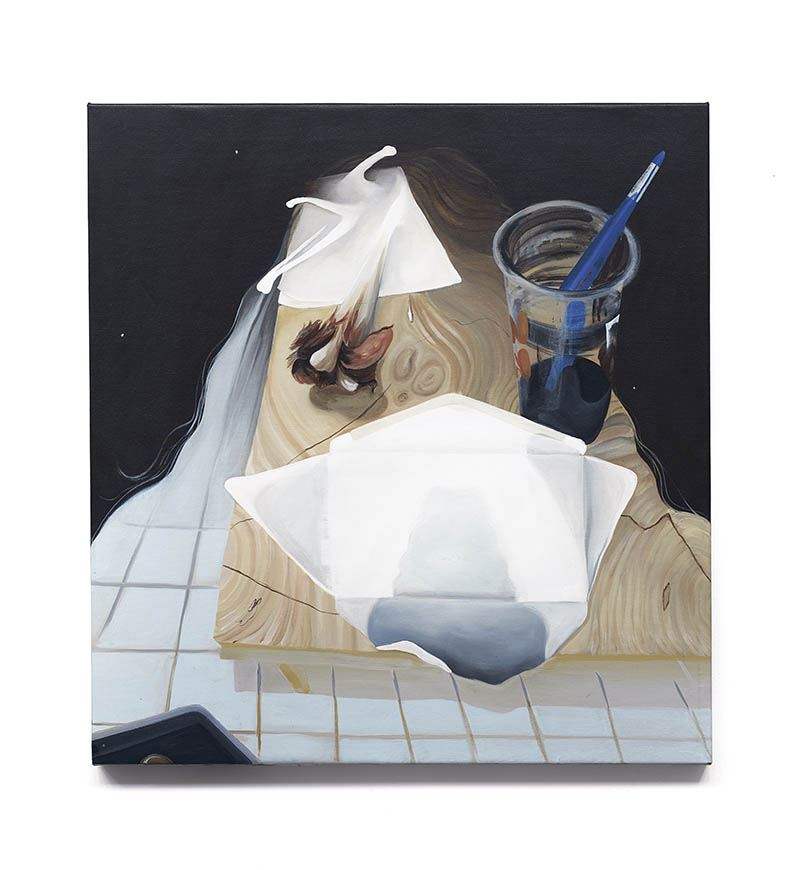
A letter to the boss Acrylic on canvas 34x32x1.5 inches 2022 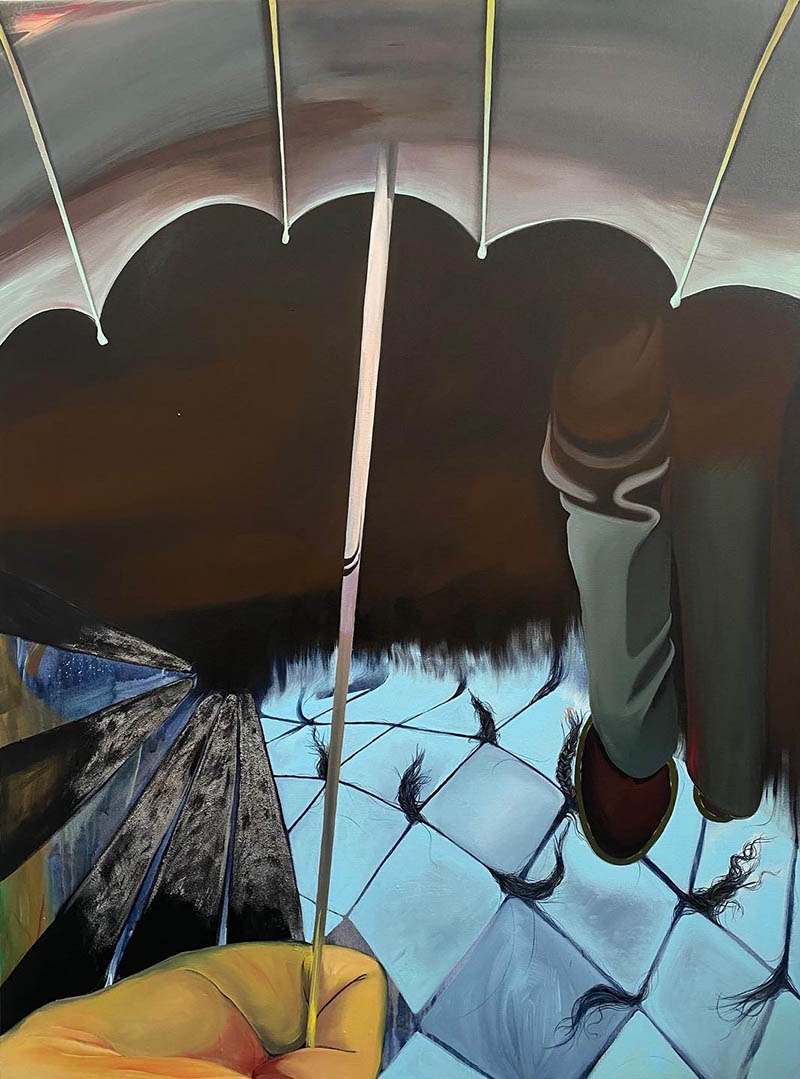
The hot skin and the cold sidewalk 100.120cmAcrylic on canvas2022
What techniques do you use?
I make anthropomorphically scaled canvases first, and then I begin to make acrylic figurative and abstract underpainting on them. I begin with studies of my surroundings and then repeatedly draft them until they grow into something more. After the initial draft is complete I begin to transfer it onto the canvas, at which point improvisation often takes over. Because I let the medium control the process, I oftentimes end up with something completely different from what was initially intended. This is the most exciting part of the process to me and I liken it to traveling.
Sara Rahmanian – www.sararahmanian.com



